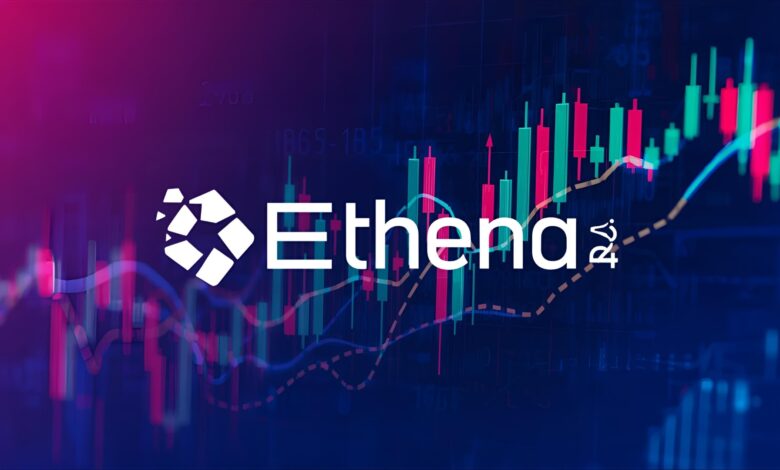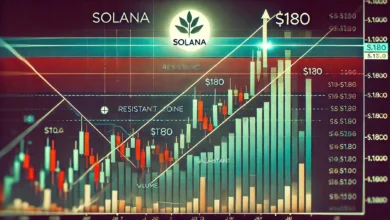Ethena Launches USDe & sUSDe on Plasma What It Means
Ethena brings USDe and sUSDe to the Plasma blockchain. Explore mechanics, yields, integrations, risks, and what this launch unlocks for DeFi users and builders.

The expansion of stablecoin infrastructure is accelerating—and Ethena’s USDe and staked USDe (sUSDe) arriving on the Plasma blockchain marks a notable milestone for on-chain dollars and yield-bearing cash equivalents. USDe is a delta-neutral synthetic dollar, engineered to maintain a dollar value while being fully on-chain and censorship-resistant. Its staked counterpart, sUSDe, accrues programmatic rewards from the portfolio that backs USDe and from basis/funding spreads in derivatives markets.
Plasma, meanwhile, has positioned itself as a stablecoin-native chain, designed to route global stablecoin flows at scale with EVM compatibility and high throughput. Its mainnet beta rollout and the debut of its XPL token introduced a payments-first environment that aims to pair everyday stablecoin transfers with deeper DeFi rails.
The chain’s public communications emphasise zero-fee USD₮ transfers during rollout and long-term alignment with emerging stablecoin regulations—while industry coverage highlights the launch of XPL on major exchanges. In that context, USDe and sUSDe landing on Plasma brings a yield-aware stable asset directly into a payments-optimised L1.
The sections below unpack what USDe and sUSDe are, how the Plasma environment alters the calculus for users and protocols, what early integrations are essential, and where the opportunities (and risks) lie for DeFi participants.
What is USDe and how does it stay “dollar-like”?
Ethena’s USDe is not a traditional fiat-backed token. Instead, it’s a synthetic dollar created via a fully collateralised, delta-neutral strategy. In simplified terms, the system backs USDe with crypto collateral and offsets directional price risk using derivatives (like perpetual futures), striving for a leveraged-free, market-neutral position that tracks the dollar. This construction aims to deliver scalability, on-chain transparency, and censorship resistance, while maintaining price stability at around $1.
A key by-product of Ethena’s approach is that the mechanism can harvest funding and basis spreads from derivatives markets. Those cash flows, combined with rewards from any yield-bearing components in the backing, make USDe more than “just” a transferable claim—it becomes the engine that enables sUSDe, a token designed to accrue rewards over time.
SUSDe: the yield-accruing “savings” layer
When users stake USDe into Ethena’s contracts, they mint sUSDe, which is designed to automatically accrue rewards. Instead of rebasing token balances, Ethena increases the exchange rate between sUSDe and USDe over time—so one sUSDe gradually becomes redeemable for more USDe as yield accumulates. Think of sUSDe as a crypto-native savings instrument built on top of an on-chain synthetic dollar. Educational explainers from industry venues walk through how the exchange-rate mechanism compounds over time as market yields accrue.
This “value-accrual via exchange rate” design reduces friction for integrations because protocols only need to track a single token that steadily becomes more valuable relative to USDe. It also avoids some of the accounting clutter associated with rebasing balances across DeFi platforms.
Why Plasma for USDe and sUSDe?
Plasma bills itself as a stablecoin-first Layer 1, prioritising real-world payments flow and settlement efficiency without sacrificing DeFi composability. Its mainnet beta introduced a high-throughput consensus (PlasmaBFT) and emphasises zero-fee USD₮ transfers during the rollout phase within its own products—an intentional wedge to capture consumer and merchant stablecoin usage at scale before upselling deeper services, such as FX and credit. Coverage of Plasma’s XPL listing on major exchanges underscores the project’s commitment to achieving broad distribution and liquidity from the outset.

Plasma has publicly stated that onboarding the largest dollar-backed issuers—from Tether’s USD₮ to Ethena’s USDe—is a strategic priority to catalyse adoption. That focus dovetails with Ethena’s cross-chain expansion strategy and the broader growth in USDe/sUSDe usage across DeFi. In short, Plasma aims to be the settlement backbone for stablecoins; Ethena supplies a yield-aware digital dollar that attracts users, liquidity, and integrations.
How USDe and sUSDe can be used on Plasma
Everyday payments with a yield-aware back end
Because Plasma optimises for fast, low-cost stablecoin transfers, USDe can behave like digital cash for remittances, merchant payments, and P2P transfers, while sUSDe offers a “park and earn” destination for balances that don’t need to move immediately. Plasma’s public materials emphasise zero-fee USD₮ transfers in rollout; bringing USDe alongside that experience gives users a choice between a simple stablecoin for payments and a yield-accruing savings token in the same environment.
DeFi money legos: lending, borrowing, and structured yield
Ethena assets have already demonstrated significant product-market fit in lending markets, such as Aave, where sUSDe demand as collateral has been high. Those patterns tend to repeat across chains once oracle support and risk parameters land. On Plasma, a payments-heavy user base could plug into lending pools that accept USDe and sUSDe as deposits or collateral, opening routes to leveraged strategies, basis trades, and structured products that pair stablecoin yields with low transfer friction. Research shops tracking the Aave integration have noted rapid sUSDe inflows on other networks—an indicator of likely appetite on any new chain where the rails are in place.
Cross-chain liquidity and institutional rails
Plasma’s messaging also emphasises ambitions in FX, merchant settlement, and regulated on- and off-ramps. If those rails materialise, USDe/sUSDe can become core inventory for market makers and fintechs routing flows across L1S and centralised venues. Ethena’s recent institutional engagement signals that professional allocators are exploring USDe/sUSDe as part of diversified digital dollar strategies, a trend that Plasma’s throughput and cost profile could accelerate.
Under the hood: what makes Ethena’s model tick
Delta-neutral backing and risk management
Ethena’s documentation describes USDe as fully backed by on-chain collateral and offsetting derivatives positions, targeting a market-neutral stance. The aim is to hedge directional crypto risk while harvesting funding and basis spreads. While the details vary with market conditions, the guiding principle is that every USDe is balanced by assets and hedges such that net exposure to crypto volatility is minimised, enabling a dollar-like profile with on-chain transparency.
From USDe to sUSDe: how the yield accrues
When you convert USDe to sUSDe, you lock the principal into Ethena’s contracts and receive a token whose exchange rate to USDe increases over time as the system distributes rewards. Educational overviews compare it to a savings account: you don’t see your coin count rebase daily; instead, one SUSDe becomes redeemable for a larger amount of USDe as yields compile, simplifying accounting for integrators and users.
Why this matters for DeFi builders

Launching USDe and sUSDe on a stablecoin-native L1, such as Plasma, reduces the frictions between payments, treasury management, and DeFi yield. For builders, it means:
-
A standardised, on-chain dollar (USDe) with transparent mechanics that can be routed through payment flows and liquidity venues at speed.
-
A native yield layer (sUSDe) that simplifies product design for savings vaults, structured products, and collateralised lending because value accrues via exchange rate rather than token count changes.
-
An ecosystem positioning itself to layer merchant tools, FX, and neobank-style services (Plasma One) on top of base transfers—broadening the surface area where stablecoins are useful.
As these pieces snap together, DeFi apps can offer a cash-like user experience for payments and a savings-like user experience for idle balances—all within one chain, thereby reducing cross-chain fragmentation.
Guardrails and risks to consider
Market, liquidity, and regulatory risks
Even with a delta-neutral design, USDe’s stability depends on orderly derivatives markets, robust venue liquidity, and reliable counterparties. Educational resources emphasise that exchange risk, liquidity squeezes, and regulatory shifts remain relevant considerations. In 2025, Ethena also navigated jurisdictional complexity, including an EU-specific wind-down process for specific operations—illustrating how policy can shape product availability. Users should continually evaluate venue risk, counterparty exposure, and the evolving regulatory context before deploying capital.
Smart-contract and integration risks
As USDe/SUSDe integrate with lending markets, DEXs, and bridges on Plasma, each additional venue adds its own bright contract surface area. While Plasma’s thesis is compelling—high-throughput, low-fee stablecoin flows—new networks require time to harden. Early adopters should monitor audits, bug bounty activity, and governance parameters (like collateral factors and caps on lending markets) as liquidity scales.
The competitive landscape: how USDe compares
Traditional fiat-backed stablecoins (e.g., USD₮) excel at fiat redemption and have massive network effects, but they don’t natively accrue yield to holders. USDe offers a crypto-native alternative that can earn via market mechanics while remaining on-chain and programmable. sUSDe, in turn, packages yield into a single asset without rebasing, making it attractive collateral and a base currency for DeFi strategies.
Plasma bets that payment gravity will pull users in—and once they’re there, yield-bearing dollars like sUSDe can deepen engagement. With XPL trading live on big venues and the network courting large issuers and institutions, the stage is set for experimentation at the intersection of payments and DeFi.
Outlook: what to watch next
Near-term, watch for expanded oracle support, risk parameter listings for USDe/sUSDe across Plasma’s money markets, and the maturation of merchant tooling that exploits Plasma’s low-fee transfers. From Ethena’s side, continued institutional partnerships and cross-chain deployments should add depth and optionality, sustaining TVL and improving market resilience. As both ecosystems iterate, expect more structured yield products and treasury solutions that treat sUSDe as default base collateral.
If the broader market stays constructive and derivatives funding remains favourable, sUSDe’s accrued value can compound meaningfully. If conditions tighten, Ethena’s delta-neutral posture will again be tested—making risk controls and transparency the differentiators users care most about.
Conclusion
Ethena brings USDe and sUSDe to Plasma, connecting a yield-aware synthetic dollar with a payments-optimised blockchain. USDe provides a stable, on-chain dollar; sUSDe layers in programmatic yield via exchange-rate appreciation; Plasma supplies a high-throughput, low-fee environment aimed at real-world stablecoin use. For users, the combo means faster payments, richer savings options, and growing DeFi liquidity. For builders, it means simpler money legos that can power lending, structured products, and embedded finance experiences. If adoption continues at the pace suggested by Ethena’s rising TVL and Plasma’s high-profile mainnet beta and XPL launch, this integration could become a template for how internet money should work: fast, composable, and rewarding.
FAQs
Q: What makes USDe different from fiat-backed stablecoins?
USDe is a synthetic dollar that uses a delta-neutral hedging strategy rather than holding cash and T-bills. The idea is to keep price stability while remaining fully on-chain and scalable. The approach also unlocks market-based yields that feed into sUSDe.
Q: How does sUSDe earn yield?
sUSDe accrues rewards by increasing its exchange rate against USDe. As the Ethena system harvests derivatives funding/basis spreads and other rewards, that value flows to sUSDe holders over time—no rebasing required.
Q: What advantages does Plasma bring to USDe users?
Plasma is designed for stablecoin-native throughput with zero-fee USD₮ transfers during its rollout, as well as EVM compatibility for DeFi applications. That creates a fast, low-friction environment for payments, treasury, and lending with stablecoins like USDe and sUSDe.
Q: Are there risks to holding USDe or sUSDe?
Yes. Stability depends on liquid derivatives markets and operational venues; there are also smart-contract, liquidity, and regulatory risks that users should assess. Events in 2025 underscore how jurisdictional rules can affect availability and redemption paths.
Q: How big is Ethena’s footprint today?
Industry reporting indicates that Ethena’s TVL is nearing $14.5 billion by 2025, alongside new institutional investment, signalling strong adoption across DeFi and growing interest from professional allocators.
Show All: Ethena USDe Avalanche Launch sUSDe Cross-Chain Expansion Guide









